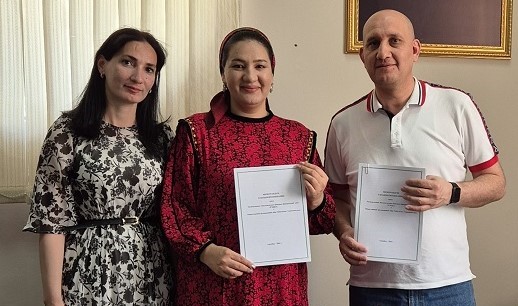Financing mechanisms for specially protected natural areas improved in Kyrgyzstan
Seminars to review existing and new potential mechanisms for financing specially protected natural areas (SPNA) took place in the Issyk-Kul region on April 23-25. The seminars brought together representatives of the Department of Biodiversity Conservation, GIZ in Kyrgyzstan, local tourism organizations, non-governmental organizations, local authorities and specialists from pilot protected areas.
For information: Since 1994, a network of specially protected natural areas has been organized in Kyrgyzstan, the total area of all protected areas is 1,476,121.6 hectares, which is 7.38% of the total area of the country. Specially protected natural areas are divided into three categories, differing in goals and protection regimes, namely: reserves, natural parks and reserves. Today in Kyrgyzstan there are 10 state reserves, 13 state natural parks, 8 forest, 23 botanical, 19 geological, 2 complex and 12 hunting (zoological) reserves. As a result of the analysis carried out by the BIOFIN project in Kyrgyzstan in 2017-2018, it was revealed that there is a shortage of funds for biodiversity conservation in the republic for 2019-2023. amounts to more than 2 billion soms. Moreover, the assessment made by the BIOFIN project indicates that funding for biodiversity from the state budget will not increase in the coming years. It is therefore essential to establish a reliable mechanism for mobilizing additional extra-budgetary financial resources.

The seminars reviewed global experience in financing protected areas and possible options for additional financing of national protected areas, taking into account existing regulatory documents and the support of international development partners, financial organizations and the non-governmental sector.
According to preliminary analytical reports of experts from the CAREC, there are more than 17 different mechanisms for financing the conservation of biodiversity and protected areas, of which only 4 are used in Kyrgyzstan. Additional funding mechanisms will allow protected areas to attract more financial resources for scientific work, monitoring of flora and fauna, for reforestation and afforestation, for improving the material and technical base, infrastructure and for training, exchange of experience with other countries.
An important step for the successful implementation of new and improvement of existing financing mechanisms is piloting over a certain period, the results of which will influence the approval of these mechanisms.

This seminar was held as part of the project “Feasibility study of an effective system of financial self-sufficiency of protected areas (PAs)” implemented by the Branch of the Regional Environmental Center of Central Asia (CAREC) in Kyrgyzstan with the support of UNDP-BIOFIN porgramme.
Contact person: Kuban Matraimov, Director of the CAREC Branch in Kyrgyzstan, kmatraimov@carececo.org



